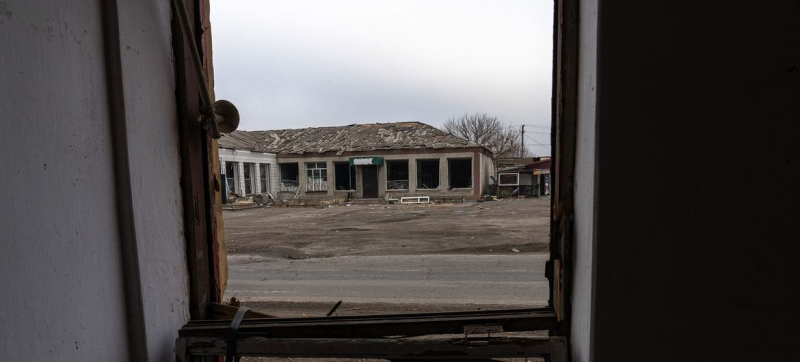- Bangladesh 2024, Nepal 2025: Youth Movements Force Leaders Out |
- Nepal PM resigns as 19 killed in social media ban, graft protests |
- Western Support for Israel Faces Growing Strains |
- Nepal lifts social media ban after 19 killed in protests |
- DU VC vows maximum transparency in Tuesday's DUCSU elections |
Russian Strike Kills 20+ in Ukraine, Health System Hit

A village in the Donetsk region of Ukraine has been largely abandoned due to the ongoing conflict there. (file)
A Russian airstrike on a Ukrainian village in the frontline region of Donetsk on Tuesday reportedly killed more than 20 people, including many elderly civilians who had gathered to collect pension payments.
The attack on Yarova injured nearly 20 others. Many elderly civilians have chosen to remain in frontline communities despite the escalating danger from Russia’s continuing offensive, said Assistant Secretary-General Matthias Schmale, the UN’s top humanitarian official in the country.
“This lasting violence continues to tear lives apart. In recent days, the Donetsk region has seen a rise in civilian casualties and damage as hostilities have intensified,” he said in a statement.
“On behalf of the United Nations and the humanitarian community, we stand with all families grieving their loved ones and with all those injured. Attacks affecting civilians as they go about their daily lives are unconscionable.”
Ambulances attacked, chronically ill patients lacking care, and no peace in sight: for millions of Ukrainians, the run-up to another winter of war is yet another life-or-death challenge, the UN health agency (WHO) said on Tuesday.
Speaking from Kyiv following deadly strikes on the Ukrainian capital by Russia on Sunday, WHO’s representative in the country, Dr Jarno Habicht, told reporters in Geneva that more than 800 drones and missiles had been used in the latest attack, making it one of the largest since the start of the war in February 2022.
“This is the reality faced daily and nightly by many aid workers, humanitarians, and, most importantly, millions of Ukrainians,” he said.
Dr Habicht described his recent mission to the Zaporizhzhia frontline region, which he said had suffered “relentless” attacks, including on healthcare.
“The strikes are continuous,” he stressed, explaining that WHO is constantly delivering medical kits to facilities where trauma patients receive care. “We have daily injuries, unfortunately, across Ukraine,” he added.
The WHO official pointed to a concerning 12 per cent year-on-year increase in attacks targeting health infrastructure in the country. One in four attacks was against an ambulance, he said.
“If we think about non-war environments, when anybody calls an ambulance, it is for a reason — a matter of life and death,” he said. “But in Ukraine, ambulances are under attack.”
According to the UN humanitarian affairs coordination office (OCHA), casualties from the latest strikes were also reported in Odesa, Chernihiv, Kharkiv, Kremenchuk, Kryvyi Rih, and Kherson. Energy infrastructure was also targeted, disrupting power and water supplies ahead of the winter season, OCHA said.
“We need to prepare for a winter at war because we don’t see peace in sight,” Dr Habicht insisted.
Following his visit to Zaporizhzhia and discussions with local authorities and health workers, he highlighted the need to keep heating stations open as the cold season approaches and to ensure clean water in healthcare facilities.
Dr Habicht also underscored the immense mental health burden of the conflict, which, he warned, will “remain for generations.”
According to WHO’s latest Health Needs Assessment, conducted in Ukraine in April, seven in 10 people reported mental health issues — including anxiety, depression, and severe stress — over the past year, “directly linked to attacks on civilian infrastructure.”
The WHO representative added that during his hospital visits in Zaporizhzhia on Monday he saw many patients over 60 in need of rehabilitation support after strokes. “All other diseases continue during the war,” he said, stressing that “recovery cannot wait” for patients with chronic illnesses such as cancer and heart disease.
Increased funding is urgently needed for the humanitarian response in Ukraine and to support recovery and restoration efforts. But so far, only 35.5 per cent of the required resources (around $46 million) have been secured, allowing WHO and its partners to reach one million people out of a target of three million.

